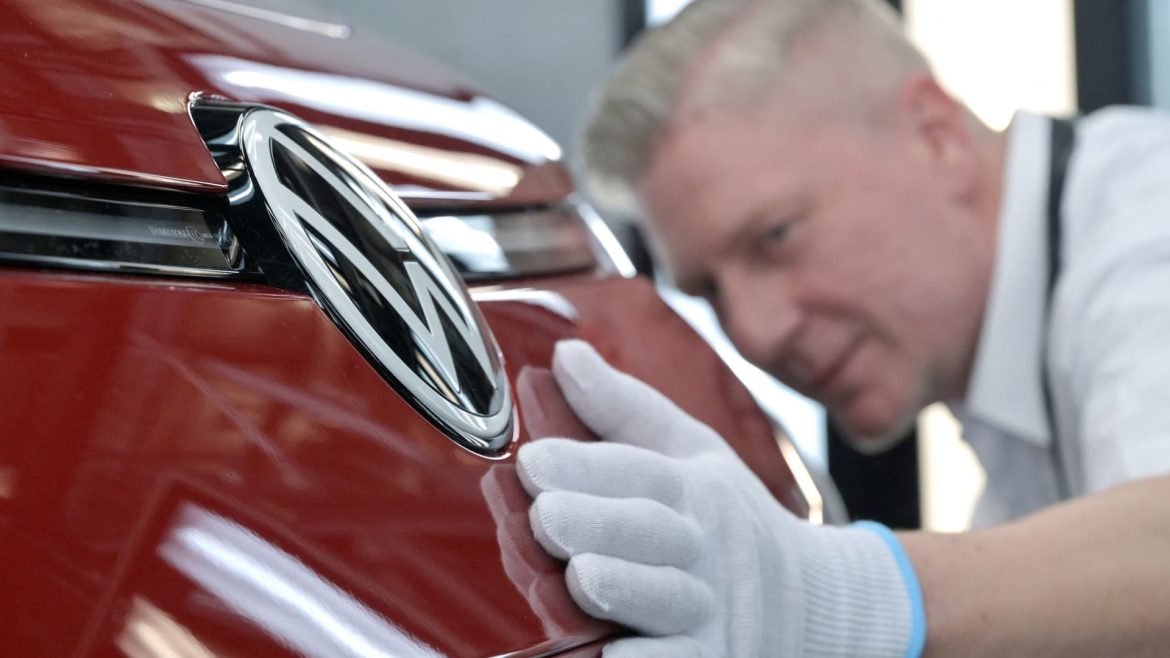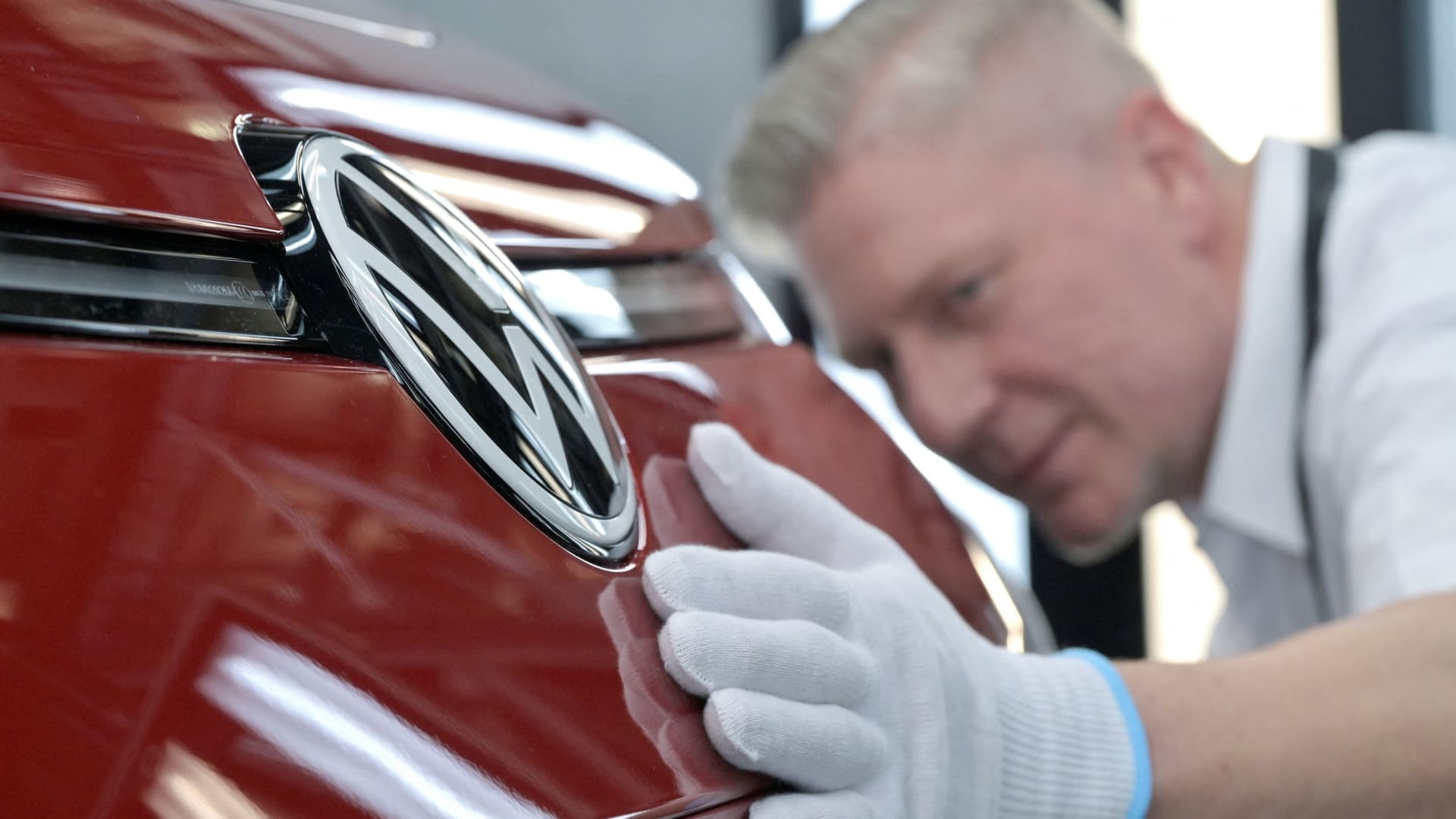The Complex Web of Trade: How US Policies Are Reshaping German Automakers’ Future
Introduction: A Global Industry in the Crosshairs
The automotive sector, a vital pillar of Germany’s economic strength, is navigating uncharted waters. The industry, which contributes significantly to the country’s GDP and employment, is increasingly entangled in the geopolitical tensions between the United States and other global economic powers. The recent resurgence of tariff threats, particularly from the Trump administration, and the subsequent U.S.-Japan trade agreement have cast a long shadow over German automakers. This report delves into the multifaceted impact of these trade policies, exploring the challenges and opportunities they present for the German automotive industry.
The Tariff Tightrope: Balancing Act for German Automakers
The Immediate Economic Impact
The looming threat of a 30% tariff on imported goods, as proposed by former President Trump, has sent shockwaves through the German automotive industry. This potential tariff, combined with existing duties, could lead to a significant increase in consumer prices. For instance, a 30% tariff on a €50,000 car would add €15,000 to the price tag, making it less competitive in the U.S. market. This price hike could lead to a reduction in demand, directly impacting the profitability and market share of German automakers.
The Uncertainty Factor
Beyond the immediate economic impact, the tariff threats introduce a climate of uncertainty that can disrupt long-term investment decisions and strategic planning. Automakers may be forced to reconsider their production locations, supply chains, and pricing strategies. For example, BMW’s decision to build its X models in the U.S. was partly driven by the need to mitigate the impact of potential tariffs. This uncertainty can lead to costly adjustments and operational inefficiencies, as companies struggle to adapt to a rapidly changing trade landscape.
The U.S.-Japan Trade Deal: A Double-Edged Sword
A Beacon of Hope
The U.S.-Japan trade agreement, which includes a reduction of U.S. tariffs on imported Japanese vehicles and parts to 15% from a proposed 25%, has sparked optimism among European automakers. The hope is that this agreement could pave the way for similar concessions in negotiations between the U.S. and other major exporters, including the European Union. This optimism is not unfounded, as the U.S. has a history of using trade agreements to address specific market access issues.
A Potential Threat
However, the agreement may also create new competitive dynamics. A more favorable tariff regime for Japanese automakers could put German manufacturers at a disadvantage in the U.S. market. For instance, Toyota and Honda, which have a significant presence in the U.S., could benefit from the reduced tariffs, intensifying the pressure on German automakers to secure their own trade concessions. This competitive pressure could lead to a race to the bottom, with automakers cutting costs and potentially compromising on quality or innovation.
The Broader Context: A Perfect Storm for German Automakers
Technological Transformation
The German automotive industry is undergoing a period of significant transformation, driven by technological advancements, changing consumer preferences, and increasing regulatory pressures. The shift towards electric vehicles (EVs) requires substantial investments in research and development, new production facilities, and battery technology. For example, Volkswagen’s €30 billion investment in EVs and digitalization is a testament to the industry’s commitment to this transformation.
Regulatory Pressures
At the same time, automakers face pressure to reduce emissions and comply with increasingly stringent environmental standards. The European Union’s target of reducing CO2 emissions from new cars by 37.5% by 2030 is a case in point. Meeting these targets requires significant investments in clean technologies and operational changes, adding to the financial burden on automakers.
Economic Uncertainties
These challenges are further compounded by global economic uncertainties, including slowing growth in key markets and fluctuations in currency exchange rates. For instance, the recent slowdown in China, a key market for German automakers, has led to a decline in sales and profitability. Similarly, the strengthening of the euro against the dollar has made German exports more expensive, further eroding their competitiveness.
Strategies for Survival: Charting a Course Through Turbulent Waters
Diversification: Spreading the Risk
One of the key strategies for mitigating the impact of tariffs and other trade barriers is diversification. Reducing reliance on the U.S. market by expanding into other regions, such as Asia and South America, can help to cushion the impact of potential tariffs. For example, Mercedes-Benz’s decision to build a new plant in Thailand is part of its strategy to tap into the growing Southeast Asian market.
Innovation: Staying Ahead of the Curve
Investing in research and development to stay ahead of the curve in terms of technology and product innovation is crucial for maintaining competitiveness. This includes developing EVs, autonomous driving systems, and other cutting-edge technologies that can differentiate German automakers from their rivals. For instance, BMW’s iNEXT project, which combines electric propulsion, autonomous driving, and connectivity, is a prime example of this innovation-driven approach.
Cost Optimization: Doing More with Less
Implementing measures to improve operational efficiency and reduce costs can help to offset the impact of tariffs and other trade barriers. This may involve streamlining production processes, optimizing supply chains, and leveraging automation to reduce labor costs. For example, Volkswagen’s “Industry 4.0” initiative aims to integrate advanced manufacturing technologies to improve efficiency and flexibility.
Strategic Alliances: Strength in Numbers
Forming strategic alliances with other automakers, technology companies, and suppliers can provide access to new markets, technologies, and resources. These alliances can also help to share the costs and risks associated with developing new products and entering new markets. For instance, the partnership between BMW and Daimler to develop autonomous driving technologies is a testament to the power of strategic alliances.
Active Engagement: Advocating for Fair Trade
Engaging actively with policymakers and trade negotiators to advocate for fair and equitable trade policies is essential. This involves communicating the potential impact of tariffs on the German automotive industry and working to find mutually beneficial solutions. For example, the German Association of the Automotive Industry (VDA) has been actively engaging with EU and U.S. policymakers to advocate for a more balanced trade relationship.
The EU’s Role: A United Front Against Protectionism
The Power of Collective Action
The European Union plays a critical role in defending the interests of German automakers in international trade negotiations. By presenting a united front, the EU can exert greater leverage and negotiate more favorable terms than individual member states. For instance, the EU’s ongoing trade negotiations with the U.S. aim to address the issue of tariffs and promote greater trade cooperation.
Alternative Strategies
The EU is also exploring alternative strategies, such as challenging U.S. tariffs at the World Trade Organization (WTO) and forging trade agreements with other countries. For example, the EU’s recent trade agreement with Japan, which includes a significant reduction in tariffs on automotive products, is a step in this direction.
The Potential for Disruption: A Look Ahead
The Road to Recovery
The future of the German automotive industry in the face of trade tensions remains uncertain. While the U.S.-Japan trade deal offers a glimmer of hope, the threat of tariffs and other trade barriers persists. The industry must be prepared to adapt to a rapidly changing global landscape, embracing innovation, diversification, and strategic partnerships to maintain its competitiveness.
The Stakes Are High
Failure to do so could have significant consequences, not only for German automakers but also for the broader German economy. The automotive industry is a major employer and a key driver of economic growth. A decline in its competitiveness could lead to job losses, reduced investment, and a slowdown in economic activity. For instance, a 2019 study by the VDA estimated that the German automotive industry supports around 800,000 jobs directly and millions more indirectly.
Conclusion: Resilience in the Face of Uncertainty
The path ahead for German automakers is fraught with challenges, but also with opportunities. The industry has a long history of innovation and resilience, and it is well-positioned to adapt to the changing global landscape. By embracing new technologies, diversifying into new markets, and engaging actively with policymakers, German automakers can navigate the tariff terrain and emerge stronger than ever. The key lies in proactive adaptation, strategic foresight, and a commitment to innovation – qualities that have always defined the German automotive industry. The road may be bumpy, but the destination, a future of sustained growth and global leadership, remains within reach.





